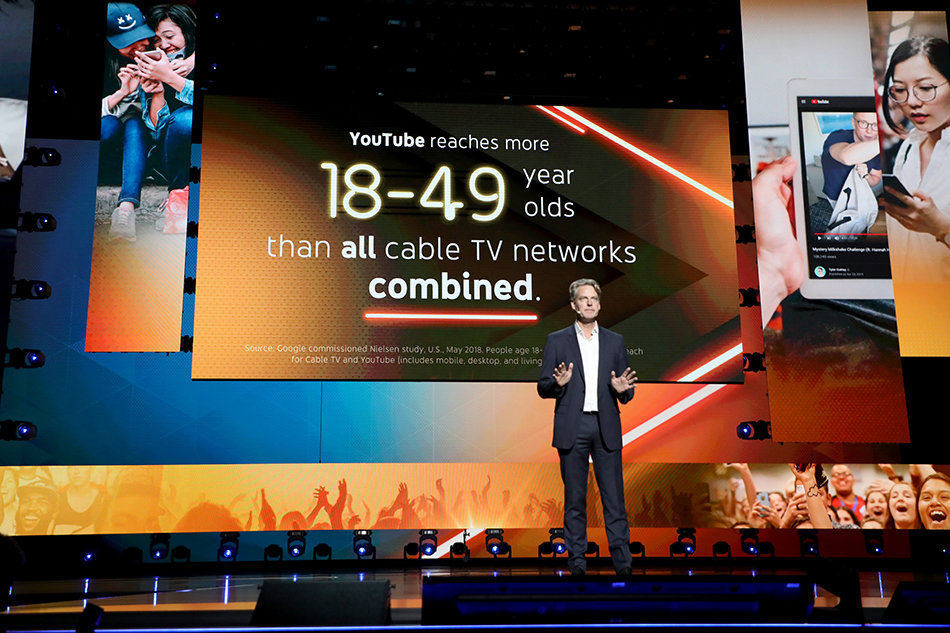Ad Sales Execs Taking Crisis a Day At a Time
The coronavirus crisis has taken a bite out of ad revenue, but ad executives said it was still too early to measure the impact, or to estimate when the market will return to normal.
Many advertisers, particularly in hard-hit categories like travel and retail, quickly canceled campaigns. Others changed their messages, creating ads supporting healthcare workers or touting home delivery. Many others have pushed the commercials they reserved to later in the year.

“We’re trying to have the philosophy of taking things two weeks at a time, not to get too far ahead of ourselves and make decisions on where things are going to be a month or two from now,” said Peter Olsen, executive VP for ad sales at A+E Networks. “Everyone’s been really reasonable. The conversations have been very understanding on both sides.”
Ed Georger, executive VP at Crown Media Family Networks, added, “I think the more that we see advertisers adjusting their message and thinking about their business more long-term the less we’re going to see the desire to just outright cancel.”
Media agency Magna recently forecast that national advertising revenue will drop 13% this year, hurt by the COVID-19 crisis, with most of the decline occurring in the first half.
The big, live upfront presentations were quickly canceled, with networks working to turn them into virtual events. Last week, the digital video NewFronts were rescheduled for June 22-26, indicating that upfront negotiations for the 2020-21 season won’t happen until later than usual.
The next milestone may come around May 1, when advertisers can exercise options to cancel spots bought during the upfront.
The smarter way to stay on top of the multichannel video marketplace. Sign up below.
The options process will give “a strong indication of whether they want to advertise their way out of the slump or whether they’ll adjust and take options,” Georger said.
In the meantime, networks are doing business in the scatter market, where some advertisers are buying ads. Georger added that there’s a need for inventory for direct-response ads, although that market is soft because there is so much supply with traditional demand down and viewing up.
“I tip my hat and give large praise to the traffic department and the IT department that equipped them and gave them the ability to be able to do their job,” Georger said. “It’s the beginning of the quarter which is always a pressure time, but now you add to that the constant adjusting of schedules. They’re doing an amazing job.”
Hallmark Channel parent Crown Media is also looking to increase its own promotion with some of the ad inventory it has on its hands. Hallmark was one of several programmers that launched campaigns featuring their on-air talent delivering messages about hand-washing and thanking nurses, doctors, store clerks and delivery drivers.
While ratings are up and viewers sheltering at home may see what looks like a normal load of commercials when they’re stuck at home watching TV, advertising revenues are likely to suffer because of the crisis and that will hurt the bottom line at media companies.
MoffettNathanson Research analyst Michael Nathanson lowered his earnings estimates for Fox, AMC and Discovery for 2020 and 2021 based on expectations that ad revenues, which had already been weak for several quarters, will fall an additional 11% in 2020 and 1% in 2021 as the economy weakens.
For 2020, Nathanson sees Fox’s earnings before interest, taxes, depreciation and amortization (EBITDA) in fiscal 2020 down 6% from his prior estimate and down 18% in 2021. At Discovery, Nathanson forecasts ad revenues being 13% lower than expected in both 2020 and 2021, leading to EBITDA being 7% lower that previously estimated in 2020 and 14% lower in 2021. AMC’s national networks will see revenues reduced by 4% in 2020 and 5% in 2021 compared to previous estimates because of COVID-19. AMC’s adjusted operating income will be 7% lower than previously forecast in both 2020 and 2021, Nathanson said.
Cash on the Sidelines
Ultimately ad revenues will be determined by how advertisers react to the crisis.
“Very few people are saying ‘I’ve got money and I’m going to put it into television,’ ” said Justin Fromm, executive VP for market intelligence at Advertiser Perspectives, which surveys media buyers and advertisers.
The biggest struggle faced by marketers who were planning to run ads in the sports now that nearly all live games have been cancelled or postponed by the crisis.
“It’s thousands of [gross ratings points] in the NCAA tournament alone,” Fromm said. The situation becomes even more acute if anything happens to the National Football League season in the fall.
Even if they want to move budgets rather than cut them, advertisers are trying to figure out what other programming can bring them similar viewers in significant numbers, Fromm said.
Jon has been business editor of Broadcasting+Cable since 2010. He focuses on revenue-generating activities, including advertising and distribution, as well as executive intrigue and merger and acquisition activity. Just about any story is fair game, if a dollar sign can make its way into the article. Before B+C, Jon covered the industry for TVWeek, Cable World, Electronic Media, Advertising Age and The New York Post. A native New Yorker, Jon is hiding in plain sight in the suburbs of Chicago.

